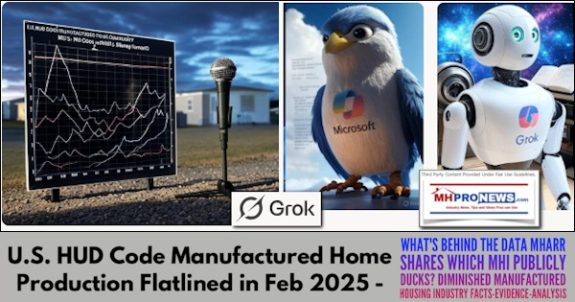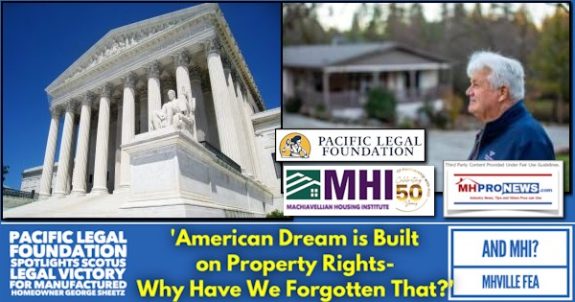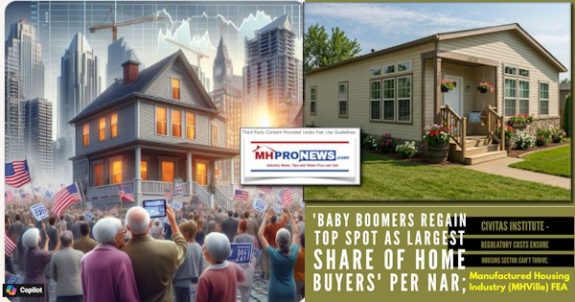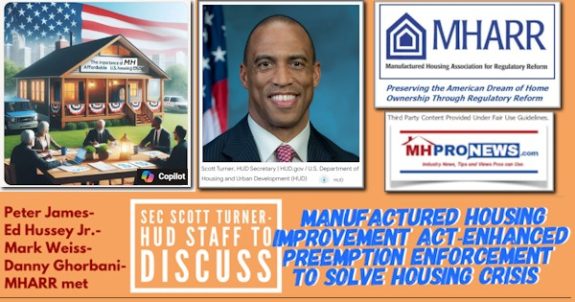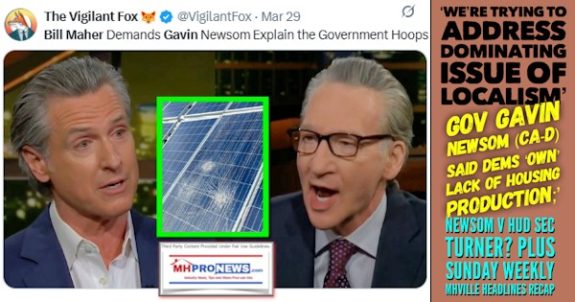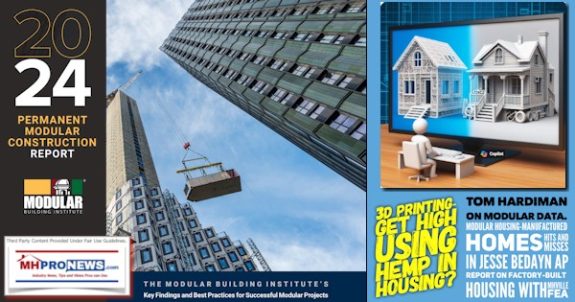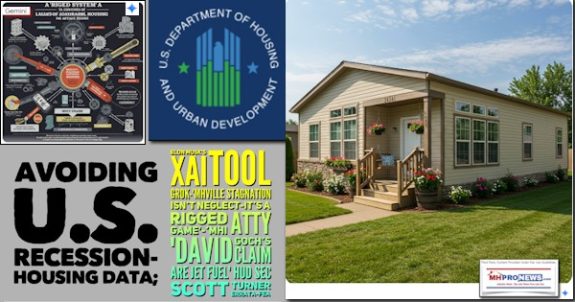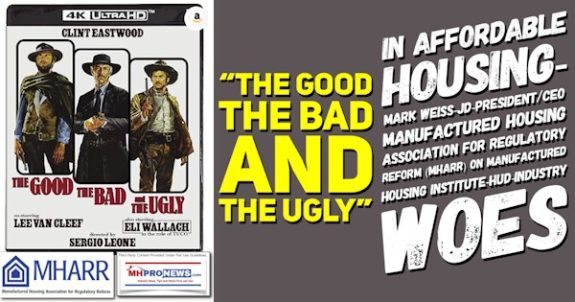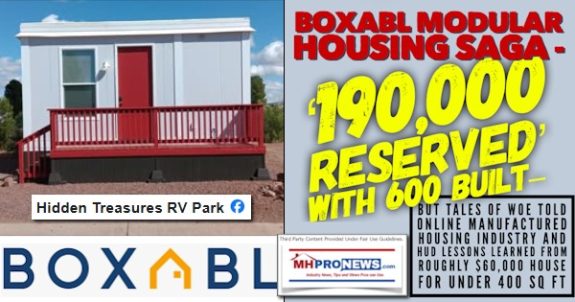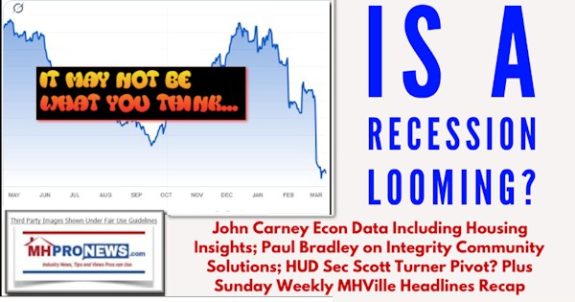MHI Financial Services and CFPB Update
Senators Urge CFPB to Provide Relief to Manufactured Housing Market
On November 6th, a bipartisan contingent of Senators urged Consumer Financial Protection Bureau (CFPB) Director Richard Cordray to provide manufactured home lenders with relief from the Dodd-Frank Act High-Cost Mortgage (HCM) triggers.
The letter specifically urges the Bureau to adopt revisions to the HCM triggers proposed by the manufactured housing industry, or alternatively, to delay “applying the high-cost rules that are currently scheduled to take effect onJanuary 1, 2014, to manufactured housing loans” while the Bureau “considers adjustments.”
Signatories to the letter, which was coordinated by Senate Banking Subcommittee Chairman on Financial Institutions and Consumer Protection Sherrod Brown (D-OH), included Sens. Lamar Alexander (R-TN), John Boozman (R-AR), Thad Cochran (R-MS), Bob Corker (R-TN), Joe Donnelly (D-IN), Joe Manchin (D-WV), Mark Pryor (D-AR), Jay Rockefeller (D-WV), Pat Toomey (R-PA), and Roger Wicker (R-MS).
House Members Call for Year-Long Delay in CFPB Mortgage Rules
118 Members of the House of Representatives have urged CFPB Director Richard Cordray to delay the effective date of mortgage finance rules, currently scheduled to go into effect January 2014, for one year until January 2015. The delay would cover HOEPA, appraisal and loan originator guidelines that impact the manufactured housing market.
The bipartisan letter, spearheaded by the Financial Services’ Financial Institutions Subcommittee Chair Shelley Moore Capito (R-WV) indicates that “mortgage rules released in January combined with amendments released in May, July, and September present financial institutions with over 4,000 pages of new regulations that they must be in compliance with by January 2014.”
The letter adds that for many community lending institutions that may have limited compliance capacity, “we urge you to defer implementation of these rules until January 1, 2015 in order to ensure financial institutions are able to transition their systems to be in full compliance with these rules.”
Click here to view the letter.
CFPB Issues New Small Entity Compliance Guide for Ability-to-Repay/QM Rules
The CPFB recently issued an updated Small Entity Compliance Guide for the Ability-to-Repay and Qualified Mortgage Rule to reflect changes from the October 2013 Final Rule. The updated guide clarifies several aspects of the Qualified Mortgage points and fees calculation per the October 2013 Final Rule. Two provisions are also included that clarify the treatment of compensation paid to or by a manufactured home retailer for the purpose of what must be counted as loan originator compensation that is included in the points and fees calculation. Click here to view the guide.
Hill and Housing Groups Call for Scaled Back QRM/Risk Retention Rule
On October 29th, Republican and Democratic leaders of the House Financial Services Committee urged the six regulatory agencies with responsibility for developing new risk retention guidelines to align these standards with the Qualified Mortgage (QM) guidelines developed by the CFPB earlier this year.
The Dodd-Frank Act requires the development of a Qualified Residential Mortgage (QRM) that would exempt mortgages from the law’s five percent risk retention requirements. Last year, the agencies had developed a proposal that would have required mortgages to have a loan-to-value (LTV) of no more than 80 percent.
Many on Capitol Hill had argued against such a requirement. In addition, a broad coalition of housing industry and consumer advocates claimed that such a standard was overly restrictive. In response, the agencies released a revised proposal that would align the QRM standard with the existing QM definition and eliminated a minimum down payment requirement. As part of the Coalition for Sensible Housing Policy, MHI joined with more than 50 other organizations endorsing the agencies’ revised QRM proposal. Click here to view the comments.
Signatories to the letter included the Chairmen and Ranking Members of three House Financial Services’ subcommittees. The letter indicates that “aligning QRM with QM will incentivize the origination and securitization of safer mortgage products and preserve access to affordable credit. It will also lead to a more streamlined regulatory environment, which will benefit all participants in our real estate markets.”
Click here to view the letter.
New Flood Insurance Rates Could Impact Housing Recovery – Provides Impetus for Congressional Action
Last month, a number of new federal flood insurance provisions mandated by the Biggert-Waters Flood Insurance Reform Act of 2012 became effective. The Biggert-Waters Flood Insurance Reform Act extended the federal flood insurance program for five more years, but also provided for a gradual phase out of federal flood insurance subsidies that have kept federal flood insurance premiums artificially low for millions of policyholders.
As of October 1st insurance providers were required to increase premium rates each year by 25 percent until premiums reflect full risk rates. These rate increases will apply to owners of business properties who are currently receiving subsidized flood insurance premiums; owners of severe repetitive loss properties consisting of 1-4 residences with subsidized premiums; and owners of any property that has incurred flood-related damage in which the cumulative amounts of claims payments exceeded the fair market value of such property.
Property owners in flood prone areas throughout the country who have been receiving subsidized flood insurance will now face higher premiums immediately, or over the next several years, or whenever the property is sold. The pending increases in flood coverage will have an adverse impact on property values, and many property owners may be unable to obtain insurance without expensive retrofits to protect against floods. It is estimated that about 600,000 homeowners nationwide will see their rates rise only if they buy new policies or allow their current policies to lapse; but some homeowners are concerned that they may be unable to sell their homes, as premiums could range from $3,000 to $33,000 or much more.
Late last month, legislation was introduced in the House of Representatives and the U.S. Senate that would provide relief from soaring flood insurance premium rates for affected home owners, prevent undue hardship on the recovering housing market, and stop home values from dropping. The Homeowner Flood Insurance Affordability Act would, among other things, prevent premium rate hikes from taking effect for four years and require the Federal Emergency Management Agency (FEMA) to conduct an affordability study and to reimburse those who can prove that its existing flood plain maps are inaccurate.
MHI, and other organizations representing real estate, development, finance and insurance markets, plan to petition FEMA Administrator, Craig Fugate, to convene a National Flood Insurance Summit immediately to bring greater certainty to the implementation of the Biggert-Waters law.
Click here for more information about new federal flood insurance requirements.
HUD Issues Final Rule on New Procedures for Notification and Correction of Manufactured Home Problems
On October 1st, HUD published a final rule revising Subpart I of the Manufactured Home Procedural and Enforcement Regulations. Subpart I sets forth the policies and procedures to be followed by manufacturers, retailers, distributors, State Administrative Agencies (SAAs), primary inspection agencies and HUD in assuring that notifications and corrections of defects and imminent safety standards in manufactured homes are addressed as required by federal law.
The final rule which becomes effective on March 31, 2014, follows the publication of a February 15, 2011 proposed rule generally supported by MHI. This final rule culminates a decade-long review of the Subpart I regulations by HUD and the Manufactured Housing Consensus Committee (MHCC). It is intended to simplify, clarify, refine and reorder existing rules to clearly identify the respective responsibilities of all parties. The changes to Subpart I regulations contained in the final rule should provide more guidance to the regulated entities as well as the regulators, and minimize ambiguities in the current regulations.
In its 2011 comments on the proposed rule, MHI recommended a number of changes, virtually all of which were adopted by HUD in the final rule. The final rule includes the following MHI recommended changes:
• Maintains the currently codified definition of defect without change.
• Narrows and clarifies language in the proposed rule which provides that IPIAs must review service records for compliance with Subpart I determinations and corrections.
• Provides flexibility in methods of notifying homeowners about defects or imminent safety hazards.
• Clarifies [§3282.406(a)(2)] that a manufacturer, retailer or installer may not be held responsible for problems created by a consumer or purchaser if it is determined through dispute resolution or by any other means that the consumer or purchaser is responsible for the problem.
• Removes subjective words “unforeseeable” and “unreasonable” from §3282.402(b) regarding manufacturers liability and clarifies that manufacturers are not responsible for defects due to consumer abuse or neglect of maintenance.
• Clarifies that when a manufacturer makes a determination of a noncompliance for a minor problem found in one home, it only needs to make a record of its determination. Manufacturer’s investigation requirements have been clarified by indicating that the manufacturer is to include a review of its inspection and service records, IPIA inspection records, and as appropriate to conduct inspections of homes in the class. The subjective term “reasonable” was removed from §3282.404(a)(3).
• Removes requirements for retailers and distributors to retain records of corrections taken to bring a home into compliance with the standards and removes the time period for retention of records. Retailers are still required to retain records under HUD’s Dispute Resolution Program.
• Removes the word “fully” from the provisions in §3282.414(a) regarding replacement of a manufactured home when a manufacturer cannot correct or remove an imminent safety hazard or serious defect from a manufactured home.
• Clarifies how problems should be addressed when manufacturers make a determination that no further action is required, but a problem still exists, i.e. by keeping a record and notifying appropriate parties, or through dispute resolution {§3282.404(a)}.
In the coming weeks, MHI will host a meeting or conference call with IPIAs and other interested parties to discuss the implementation of the new rule.Click here to view a copy of HUD’s final rule.














